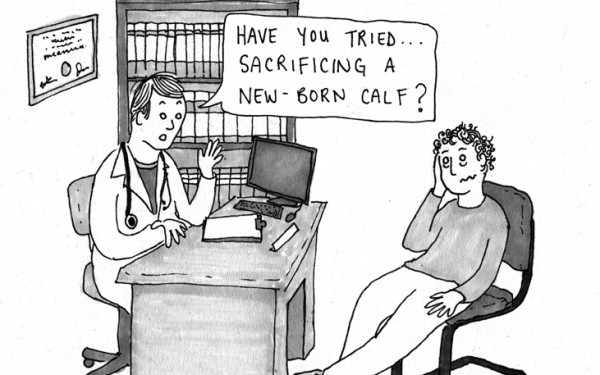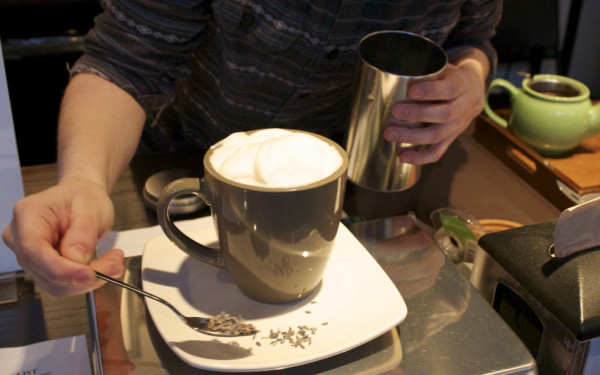Remedies from the Garden
Evidence of Herbal Medicine Exists at the Concordia Greenhouse
The debate between so-called modern and alternative medicinal practices is complex and contentious.
Untangling the subject would require an analysis of humanity’s ongoing struggle to grapple with an age-old dichotomy of “nature versus culture.”
This will not be an attempt to settle the debate once and for all. Instead, stay tuned as we explore the resurgence and rising popularity of herbalism, as evinced by the full-house at Tuesday evening’s introduction to Herbal Medicine workshop held at the Concordia Greenhouse.
Despite the day-long snowfall, the Hall Building’s indoor rooftop garden was crowded with curious listeners. Winter, arguably Mother Nature’s most trying season, didn’t deter them from delving into the basics of plant-based medicine. If anything, the season’s commonly associated ailments—from Seasonal Affective Disorder to sore throats—were what initially drove them to explore natural treatment options.
“[Herbal medicine] is something we’ve lost. What I’m teaching this evening is thousands of years old,” said Mark Reynolds, who facilitated the workshop after recently completing the City Farm School Medicinal Herbs Internship at Concordia’s Loyola Gardens. “I’m all about reclamation of that lost knowledge, because what alternate systems to Western medicine do we have available? Not very many, and herbal medicine is growing in strength because of the desire to get out of that dependency.”
In broad strokes, botanical healing is rooted in nearly every society. In an age when it’s practically second nature to seek instant relief by relying on mass-market pharmaceuticals, the basic remedial capacity of plants is often regarded by some to be outdated and ineffective.
Nevertheless, the mainstream hasn’t completely shunned the therapeutic potential of herbs, flowers, and plants. Many supermarkets and pharmacies stock plant-based products like teas and broths that contain healing ingredients similar to those introduced during the workshop. This paradoxical relationship could even be considered a vestige of society’s confusion regarding its ties to the natural world as it progressively develops, innovates, and becomes more reliable on man-made products, and less on native flora and fauna.
“So really, [herbal medicine] is about going back to the roots and to simpler things,” explained Reynolds. His presentation focused primarily on three initially unidentified native-to-Quebec plants that were displayed in both their original and infused (boiled, steeped, and strained) forms. In order to determine their identity, participants were encouraged to feel, smell, and taste the samples.
During a similar workshop held at Le Frigo Vert last November, facilitator Hunter Cooke considered the process of creating herbal remedies as one involving sensory exploration. “There’s so much to be learned about a plant just by holding, smelling, feeling, and tasting it,” said Cooke. “Interacting with a plant shows you the relationship it has to the body. You can feel its medicine just by smelling it.”
When asked to describe their experiences, every individual’s perception was unique. Using categories ranging from “bracing” to “soothing,” each participant connected with their specimen differently. Unsurprisingly, Reynolds explained that there isn’t a one-size-fits-all approach to herbal medicine.
2_900_423_90.jpg)
“It works for people in different ways,” he said, stressing that “there are a lot of poisonous plants out there that can really harm you and herbal medicine is no exception…My advice for you today is go home, do your research, and if you have a condition, check with your doctor because these herbs can alter your body’s systems.”
The mystery species were eventually revealed: comfrey (used to relieve bruises, broken bones, wounds, diarrhea, and skin ulcers), echinacea (used to prevent colds and flu, boost white blood cell formation, ease sore throats and heal cuts, burns, and scrapes), and lemon balm (used to reduce anxiety, improve appetite, soothe Seasonal Affective Disorder, and combat insomnia).
While it’s common to find plant-based infusions in the form of teas and infusions, tinctures (alcohol, vinegar, or glycerine-based blends) are safer options that deliver the respective nutritional and medicinal benefits of their constituents.
In addition, Reynolds proudly presented a salve he’d recently made for his roommate to help ease post-workout muscle soreness. He also let the group in on a little secret: he considers Fire Cider, a circulation-promoting concoction derived from apple cider vinegar, ginger, horseradish, garlic and chili peppers, to be the hottest —literally — best kept secret in the medicinal plant world, “Especially for the winter — it’s like taking a warm shower!” he said.
Given the accessibility of most ingredients, it’s a wonder why we don’t see more of them on store shelves. The reason may be because of herbal supplements’ accreditation process. In order to be officially recognized by such institutions as Health Canada, evidence supporting the efficacy of an ingredient must first be demonstrated. Other general roadblocks towards the mainstreaming of herbal medicine are their inherent accessibility. Why go to the store when you can go out in nature to find what you need?
“It’s not really profitable because it’s so simple. There isn’t really a way to make money from it,” said Cooke back in November. But a lack of official designation still hasn’t eradicated the practice. A segment of the public continues to remain intrigued and open-minded, regardless of whether or not they’re experiencing a placebo effect.
“I’m not a healer,” Reynolds clarified. “I’m an herbal medicine practitioner. The only person who can heal you is yourself, that’s what I believe. But the purpose of this [workshop] is to show people how simple it can be.”

1_900_746_90.jpg)

2_600_375_90_s_c1.jpg)

ED1(WEB)_600_375_90_s_c1.jpg)
